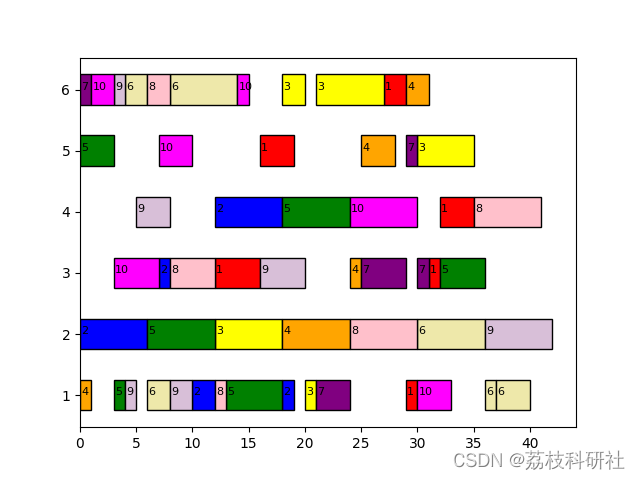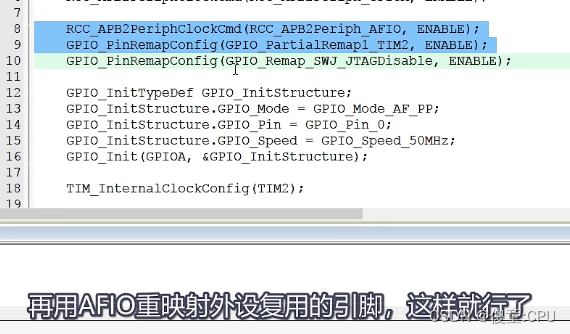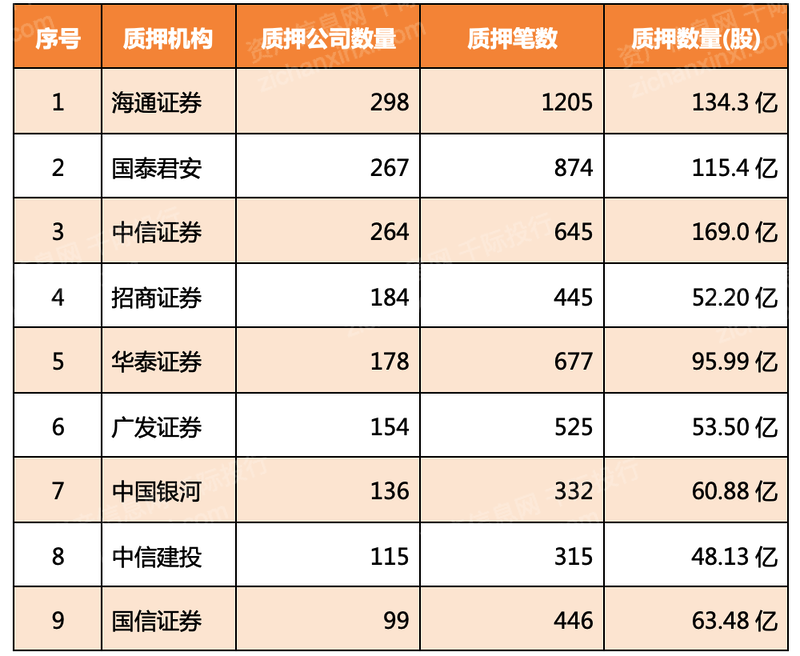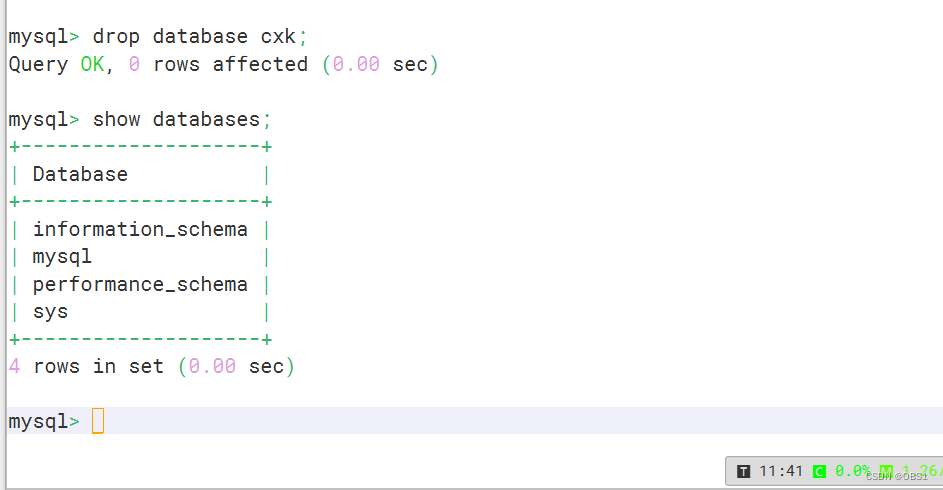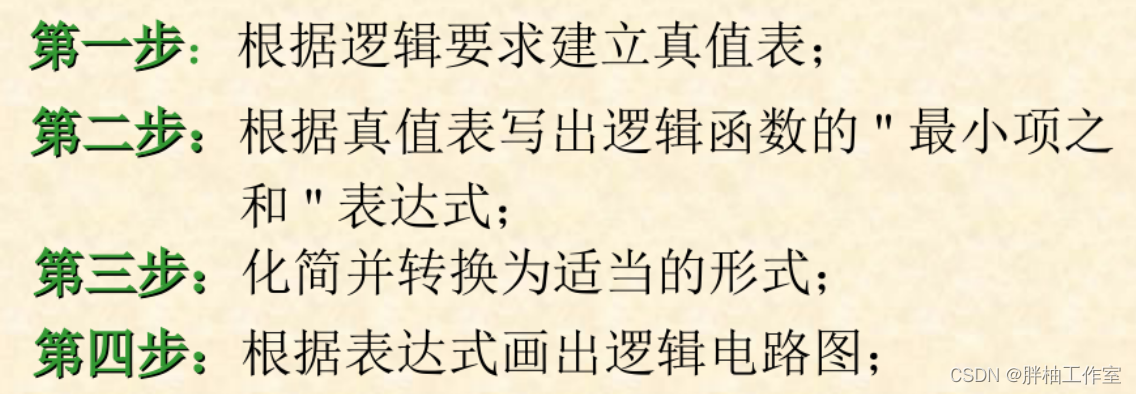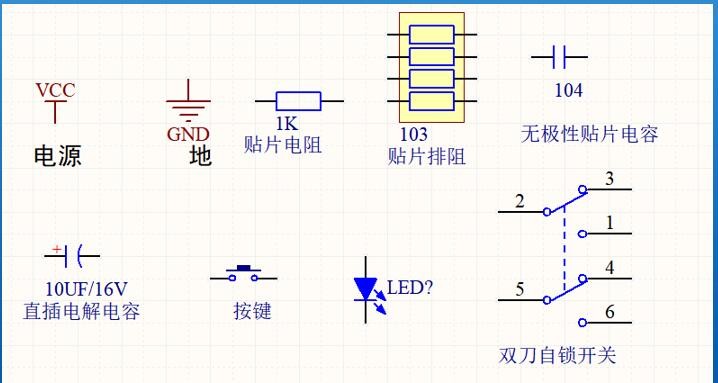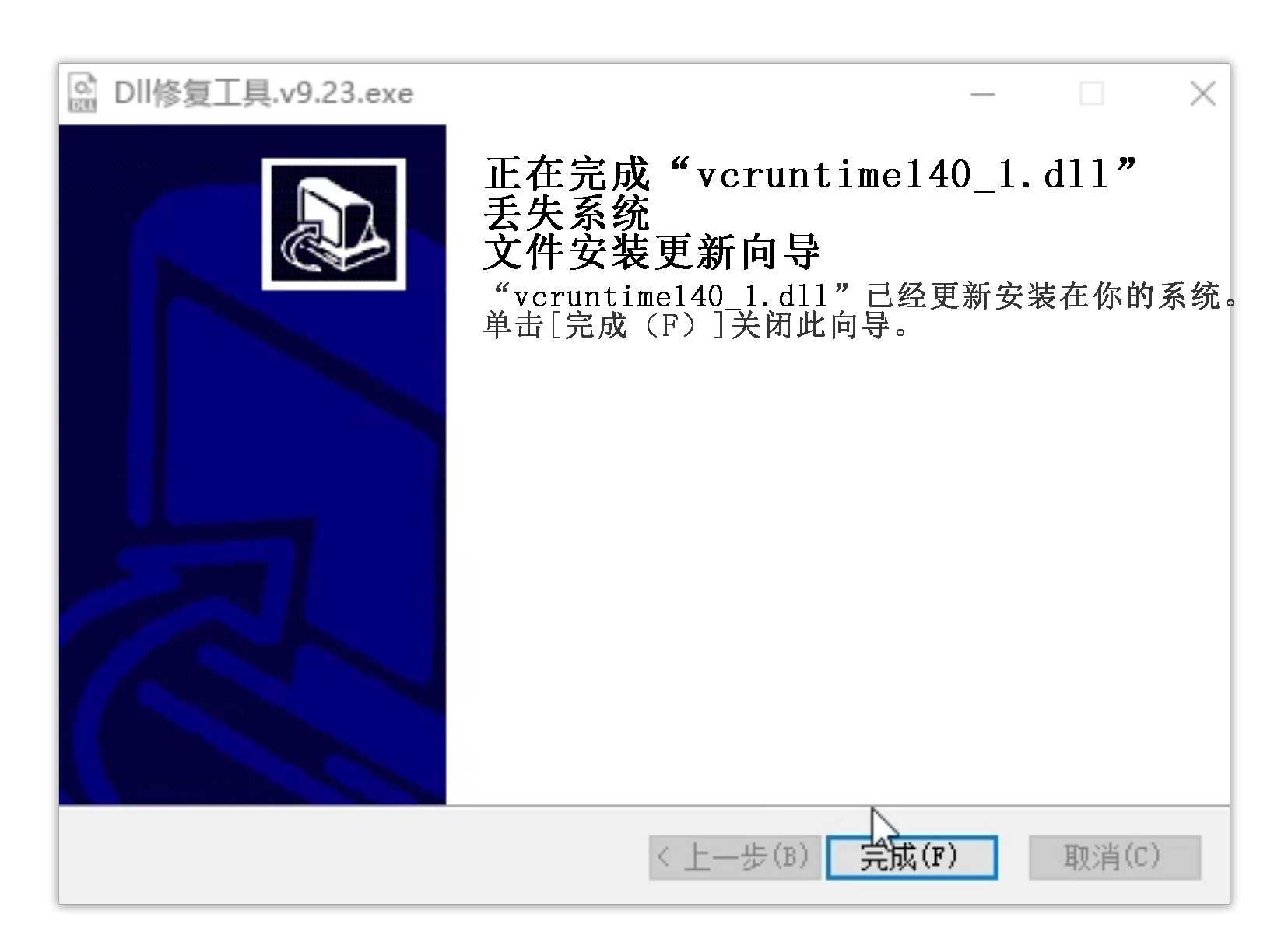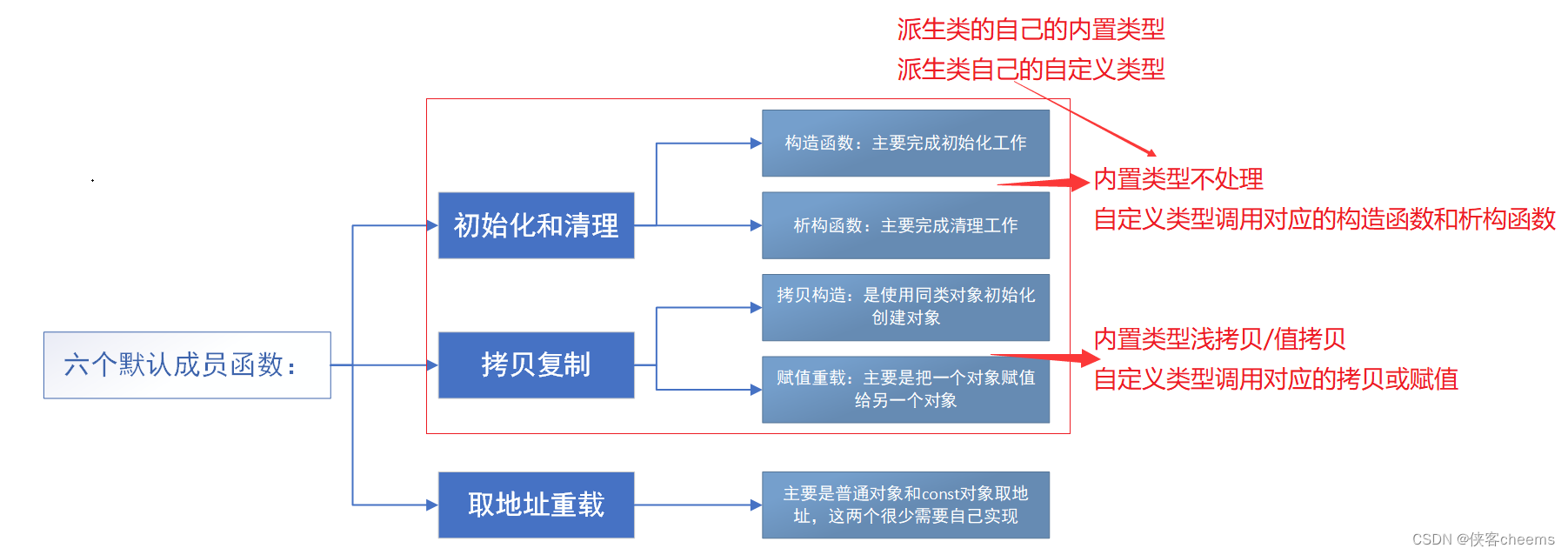蒟蒻来讲题,还望大家喜。若哪有问题,大家尽可提!
Hello, 大家好哇!本初中生蒟蒻讲解一下AtCoder Beginner Contest 300这场比赛的A-G题!
===========================================================================================
A - N-choice question
原题
Problem Statement
Given integers
A
A
A and
B
B
B, find
A
+
B
A+B
A+B.
This is a
N
N
N-choice problem; the
i
i
i-th choice is
C
i
C_i
Ci.
Print the index of the correct choice.
Constraints
All values in the input are integers.
1
≤
N
≤
300
1 \le N \le 300
1≤N≤300
1
≤
A
,
B
≤
1000
1 \le A,B \le 1000
1≤A,B≤1000
1
≤
C
i
≤
2000
1 \le C_i \le 2000
1≤Ci≤2000
C
i
C_i
Ci are pairwise distinct. In other words, no two choices have the same value.
There is exactly one
i
i
i such that
A
+
B
=
C
i
A+B=C_i
A+B=Ci. In other words, there is always a unique correct choice.
Input
The input is given from Standard Input in the following format:
N
N
N
A
A
A
B
B
B
C
1
C_1
C1
C
2
C_2
C2
…
\dots
…
C
N
C_N
CN
Output
Print the answer as an integer.
Sample Input 1
3 125 175
200 300 400
Sample Output 1
2
We have
125
+
175
=
300
125+175 = 300
125+175=300.
The first, second, and third choices are
200
200
200,
300
300
300, and
400
400
400, respectively.
Thus, the
2
2
2-nd choice is correct, so
2
2
2 should be printed.
Sample Input 2
1 1 1
2
Sample Output 2
1
The problem may be a one-choice problem.
Sample Input 3
5 123 456
135 246 357 468 579
Sample Output 3
5
题目大意
就是找出C序列中第几个数是A+B的和。
思路
太简单,不写了,直接见代码
代码
#include <iostream>
using namespace std;
int main()
{
int n, a, b;
cin >> n >> a >> b;
int c = a + b, t;
for (int i = 1; i<= n; i ++)
{
cin >> t;
if (t == c)
{
cout << i << endl;
return 0;
}
}
}
B - Same Map in the RPG World
原题
Problem Statement
Takahashi is developing an RPG. He has decided to write a code that checks whether two maps are equal.
We have grids
A
A
A and
B
B
B with
H
H
H horizontal rows and
W
W
W vertical columns. Each cell in the grid has a symbol # or . written on it.
The symbols written on the cell at the
i
i
i-th row from the top and
j
j
j-th column from the left in
A
A
A and
B
B
B are denoted by
A
i
,
j
A_{i, j}
Ai,j and
B
i
,
j
B_{i, j}
Bi,j, respectively.
The following two operations are called a vertical shift and horizontal shift.
For each
j
=
1
,
2
,
…
,
W
j=1, 2, \dots, W
j=1,2,…,W, simultaneously do the following:
simultaneously replace
A
1
,
j
,
A
2
,
j
,
…
,
A
H
−
1
,
j
,
A
H
,
j
A_{1,j}, A_{2,j}, \dots, A_{H-1, j}, A_{H,j}
A1,j,A2,j,…,AH−1,j,AH,j with
A
2
,
j
,
A
3
,
j
,
…
,
A
H
,
j
,
A
1
,
j
A_{2,j}, A_{3,j}, \dots, A_{H,j}, A_{1,j}
A2,j,A3,j,…,AH,j,A1,j.
For each
i
=
1
,
2
,
…
,
H
i = 1, 2, \dots, H
i=1,2,…,H, simultaneously do the following:
simultaneously replace
A
i
,
1
,
A
i
,
2
,
…
,
A
i
,
W
−
1
,
A
i
,
W
A_{i,1}, A_{i,2}, \dots, A_{i,W-1}, A_{i,W}
Ai,1,Ai,2,…,Ai,W−1,Ai,W with
A
i
,
2
,
A
i
,
3
,
…
,
A
i
,
W
,
A
i
,
1
A_{i, 2}, A_{i, 3}, \dots, A_{i,W}, A_{i,1}
Ai,2,Ai,3,…,Ai,W,Ai,1.
Is there a pair of non-negative integers
(
s
,
t
)
(s, t)
(s,t) that satisfies the following condition? Print Yes if there is, and No otherwise.
After applying a vertical shift
s
s
s times and a horizontal shift
t
t
t times,
A
A
A is equal to
B
B
B.
Here,
A
A
A is said to be equal to
B
B
B if and only if
A
i
,
j
=
B
i
,
j
A_{i, j} = B_{i, j}
Ai,j=Bi,j for all integer pairs
(
i
,
j
)
(i, j)
(i,j) such that
1
≤
i
≤
H
1 \leq i \leq H
1≤i≤H and
1
≤
j
≤
W
1 \leq j \leq W
1≤j≤W.
Constraints
2
≤
H
,
W
≤
30
2 \leq H, W \leq 30
2≤H,W≤30
A
i
,
j
A_{i,j}
Ai,j is # or ., and so is
B
i
,
j
B_{i,j}
Bi,j.
H
H
H and
W
W
W are integers.
Input
The input is given from Standard Input in the following format:
H
H
H
W
W
W
A
1
,
1
A
1
,
2
…
A
1
,
W
A_{1,1}A_{1,2}\dots A_{1,W}
A1,1A1,2…A1,W
A
2
,
1
A
2
,
2
…
A
2
,
W
A_{2,1}A_{2,2}\dots A_{2,W}
A2,1A2,2…A2,W
⋮
\vdots
⋮
A
H
,
1
A
H
,
2
…
A
H
,
W
A_{H,1}A_{H,2}\dots A_{H,W}
AH,1AH,2…AH,W
B
1
,
1
B
1
,
2
…
B
1
,
W
B_{1,1}B_{1,2}\dots B_{1,W}
B1,1B1,2…B1,W
B
2
,
1
B
2
,
2
…
B
2
,
W
B_{2,1}B_{2,2}\dots B_{2,W}
B2,1B2,2…B2,W
⋮
\vdots
⋮
B
H
,
1
B
H
,
2
…
B
H
,
W
B_{H,1}B_{H,2}\dots B_{H,W}
BH,1BH,2…BH,W
Output
Print Yes if there is a conforming integer pair
(
s
,
t
)
(s, t)
(s,t); print No otherwise.
Sample Input 1
4 3
..#
...
.#.
...
#..
...
.#.
...
Sample Output 1
Yes
By choosing
(
s
,
t
)
=
(
2
,
1
)
(s, t) = (2, 1)
(s,t)=(2,1), the resulting
A
A
A is equal to
B
B
B.
We describe the procedure when
(
s
,
t
)
=
(
2
,
1
)
(s, t) = (2, 1)
(s,t)=(2,1) is chosen. Initially,
A
A
A is as follows.
..#
...
.#.
...
We first apply a vertical shift to make A A A as follows.
...
.#.
...
..#
Then we apply another vertical shift to make A A A as follows.
.#.
...
..#
...
Finally, we apply a horizontal shift to make A A A as follows, which equals B B B.
#..
...
.#.
...
Sample Input 2
3 2
##
##
#.
..
#.
#.
Sample Output 2
No
No choice of ( s , t ) (s, t) (s,t) makes A A A equal B B B.
Sample Input 3
4 5
#####
.#...
.##..
..##.
...##
#...#
#####
...#.
Sample Output 3
Yes
Sample Input 4
10 30
..........##########..........
..........####....###.....##..
.....##....##......##...#####.
....####...##..#####...##...##
...##..##..##......##..##....#
#.##....##....##...##..##.....
..##....##.##..#####...##...##
..###..###..............##.##.
.#..####..#..............###..
#..........##.................
................#..........##.
######....................####
....###.....##............####
.....##...#####......##....##.
.#####...##...##....####...##.
.....##..##....#...##..##..##.
##...##..##.....#.##....##....
.#####...##...##..##....##.##.
..........##.##...###..###....
...........###...#..####..#...
Sample Output 4
Yes
题目大意
两个仅由# 和 . 组成的矩阵A和B,A的各行可以同时向右转动,最后边的列到最左边,各列可以同时向上转动,最上面的到最下面,问这种变动能否使得A和B相等。
思路
通过遍历和模拟就可以完成,比较简单,直接见代码。
代码
#include<bits/stdc++.h>
using namespace std;
const int N = 35;
string a[N], b[N], mycp[N], mydp[N];
bool flag;
int nop;
int main(){
int h,w;
cin >> h >> w;
for(int i =1 ;i <= h; i ++) cin >> a[i];
for(int i =1 ;i <= h; i ++) cin >> b[i];
for(int i =1 ;i <= h; i ++) mycp[i] = a[i] + a[i];
for(int i = 1; i <= h ;i ++){
for(int j = 0; j <= w*2 -1 ;j ++){
for(int x = 1; x <= h; x++){
if(mycp[i].substr(j,w) == b[x]){
nop = 1;
for(int t = i; t <= h; t++) mydp[nop ++] = mycp[t].substr(j,w);
for(int t = 1 ; t < i ; t++) mydp[nop ++] = mycp[t].substr(j,w);
flag = 0;
for(int t = 1; t <= nop ; t ++) if(mydp[t] != b[t]) flag = 1;
if(flag == 0){
cout <<"Yes"<<endl;
return 0;
}
}
}
}
}
cout << "No" <<endl;
return 0;
}
C - Cross
原题
Problem Statement
We have a grid with H H H horizontal rows and W W W vertical columns. We denote by ( i , j ) (i, j) (i,j) the cell at the i i i-th row from the top and j j j-th column from the left of the grid.
Each cell in the grid has a symbol # or . written on it. Let
C
[
i
]
[
j
]
C[i][j]
C[i][j] be the character written on
(
i
,
j
)
(i, j)
(i,j). For integers
i
i
i and
j
j
j such that at least one of
1
≤
i
≤
H
1 \leq i \leq H
1≤i≤H and
1
≤
j
≤
W
1 \leq j \leq W
1≤j≤W is violated, we define
C
[
i
]
[
j
]
C[i][j]
C[i][j] to be ..
(
4
n
+
1
)
(4n+1)
(4n+1) squares, consisting of
(
a
,
b
)
(a, b)
(a,b) and
(
a
+
d
,
b
+
d
)
,
(
a
+
d
,
b
−
d
)
,
(
a
−
d
,
b
+
d
)
,
(
a
−
d
,
b
−
d
)
(a+d,b+d),(a+d,b-d),(a-d,b+d),(a-d,b-d)
(a+d,b+d),(a+d,b−d),(a−d,b+d),(a−d,b−d)
(
1
≤
d
≤
n
,
1
≤
n
)
(1 \leq d \leq n, 1 \leq n)
(1≤d≤n,1≤n), are said to be a cross of size
n
n
n centered at
(
a
,
b
)
(a,b)
(a,b) if and only if all of the following conditions are satisfied:
C
[
a
]
[
b
]
C[a][b]
C[a][b] is #.
C
[
a
+
d
]
[
b
+
d
]
,
C
[
a
+
d
]
[
b
−
d
]
,
C
[
a
−
d
]
[
b
+
d
]
C[a+d][b+d],C[a+d][b-d],C[a-d][b+d]
C[a+d][b+d],C[a+d][b−d],C[a−d][b+d], and
C
[
a
−
d
]
[
b
−
d
]
C[a-d][b-d]
C[a−d][b−d] are all #, for all integers
d
d
d such that
1
≤
d
≤
n
1 \leq d \leq n
1≤d≤n,
At least one of
C
[
a
+
n
+
1
]
[
b
+
n
+
1
]
,
C
[
a
+
n
+
1
]
[
b
−
n
−
1
]
,
C
[
a
−
n
−
1
]
[
b
+
n
+
1
]
C[a+n+1][b+n+1],C[a+n+1][b-n-1],C[a-n-1][b+n+1]
C[a+n+1][b+n+1],C[a+n+1][b−n−1],C[a−n−1][b+n+1], and
C
[
a
−
n
−
1
]
[
b
−
n
−
1
]
C[a-n-1][b-n-1]
C[a−n−1][b−n−1] is ..
For example, the grid in the following figure has a cross of size
1
1
1 centered at
(
2
,
2
)
(2, 2)
(2,2) and another of size
2
2
2 centered at
(
3
,
7
)
(3, 7)
(3,7).

The grid has some crosses. No # is written on the cells except for those comprising a cross.
Additionally, no two squares that comprise two different crosses share a corner. The two grids in the following figure are the examples of grids where two squares that comprise different crosses share a corner; such grids are not given as an input. For example, the left grid is invalid because
(
3
,
3
)
(3, 3)
(3,3) and
(
4
,
4
)
(4, 4)
(4,4) share a corner.

Let
N
=
min
(
H
,
W
)
N = \min(H, W)
N=min(H,W), and
S
n
S_n
Sn be the number of crosses of size
n
n
n. Find
S
1
,
S
2
,
…
,
S
N
S_1, S_2, \dots, S_N
S1,S2,…,SN.
Constraints
3
≤
H
,
W
≤
100
3 \leq H, W \leq 100
3≤H,W≤100
C
[
i
]
[
j
]
C[i][j]
C[i][j] is # or ..
No two different squares that comprise two different crosses share a corner.
H
H
H and
W
W
W are integers.
Input
The input is given from Standard Input in the following format:
$H$ $W$
$C[1][1]C[1][2]\dots C[1][W]$
$C[2][1]C[2][2]\dots C[2][W]$
$\vdots$
$C[H][1]C[H][2]\dots C[H][W]$
Output
Print S 1 , S 2 , … S_1, S_2, \dots S1,S2,…, and S N S_N SN, separated by spaces.
Sample Input 1
5 9
#.#.#...#
.#...#.#.
#.#...#..
.....#.#.
....#...#
Sample Output 1
1 1 0 0 0
As described in the Problem Statement, there are a cross of size 1 1 1 centered at ( 2 , 2 ) (2, 2) (2,2) and another of size 2 2 2 centered at ( 3 , 7 ) (3, 7) (3,7).
Sample Input 2
3 3
...
...
...
Sample Output 2
0 0 0
There may be no cross.
Sample Input 3
3 16
#.#.....#.#..#.#
.#.......#....#.
#.#.....#.#..#.#
Sample Output 3
3 0 0
Sample Input 4
15 20
#.#..#.............#
.#....#....#.#....#.
#.#....#....#....#..
........#..#.#..#...
#.....#..#.....#....
.#...#....#...#..#.#
..#.#......#.#....#.
...#........#....#.#
..#.#......#.#......
.#...#....#...#.....
#.....#..#.....#....
........#.......#...
#.#....#....#.#..#..
.#....#......#....#.
#.#..#......#.#....#
Sample Output 4
5 0 1 0 0 0 1 0 0 0 0 0 0 0 0
题目大意
从给点的矩阵中找由 #组成的图形,其中从中心 #往外一共有几层,按层数进行统计,分别输出1层、2层、3层……n层的个数。
思路
这道题我们可以枚举每一个#,对于每一个#,可以进行X型扩展,扩展的时候注意处理边界!(详情见代码吧!)
代码
#include <iostream>
using namespace std;
const int N = 1e2 + 10;
int h, w;
char c[N][N];
int s[N];
int main()
{
cin >> h >> w;
for (int i = 1; i <= h; i ++)
for (int j = 1; j <= w; j ++)
cin >> c[i][j];
for (int i = 2; i < h; i ++)
for (int j = 2; j < w; j ++)
if (c[i][j] == '#')
{
int deep = 0;
while (i + deep + 1 <= h && i - deep + 1 >= 1 && j - deep + 1 >= 1 && j + deep + 1 <= w && c[i + deep + 1][j - deep - 1] == '#' && c[i + deep + 1][j + deep + 1] == '#' && c[i - deep - 1][j - deep - 1] == '#' && c[i - deep - 1][j + deep + 1] == '#')
deep ++;
s[deep] ++;
}
for (int i = 1; i <= min(h, w); i ++)
cout << s[i] << " ";
return 0;
}
D - AABCC
原题
Problem Statement
How many positive integers no greater than N N N can be represented as a 2 × b × c 2 a^2 \times b \times c^2 a2×b×c2 with three primes a , b a,b a,b, and c c c such that a < b < c ?
Constraints
N N N is an integer satisfying 300 ≤ N ≤ 1 0 12 300 \le N \le 10^{12} 300≤N≤1012.
Input
The input is given from Standard Input in the following format:
N N N
Output
Print the answer as an integer.
Sample Input 1
1000
Sample Output 1
3
The conforming integers no greater than
1000
1000
1000 are the following three.
300
=
2
2
×
3
×
5
2
300 = 2^2 \times 3 \times 5^2
300=22×3×52
588
=
2
2
×
3
×
7
2
588 = 2^2 \times 3 \times 7^2
588=22×3×72
980
=
2
2
×
5
×
7
2
980 = 2^2 \times 5 \times 7^2
980=22×5×72
Sample Input 2
1000000000000
Sample Output 2
2817785
题目大意
对于质数 a , b a,b a,b, and c c c, a < b < c,问 a 2 × b × c 2 a^2 \times b \times c^2 a2×b×c2组成的小于N的数的个数。
思路
方法一:
由于
a
2
×
b
×
c
2
≤
N
a^2 \times b \times c^2 \le N
a2×b×c2≤N,且a < b < c,
所以
a
5
≤
N
a^5 \le N
a5≤N,
a
≤
400
a \le 400
a≤400
对于b和c只需要遍历到
1
0
6
10^{6}
106就足够了。
所以先把
1
0
6
10^{6}
106的所有质数求出来,a只取前78个,其它的直接遍历计算就可以了。
方法二:
基本于方法一的思路 一样,只是对于C可以采用二分进行快速计算。
代码
方法一:
#include <iostream>
#include <cmath>
#include <vector>
#define int long long
using namespace std;
const int N = 1e6 + 10;
int n;
vector<int> prime;
bool st[N];
void div(int x)
{
for (int i = 2; i <= x; i ++)
{
if (!st[i]) prime.push_back(i);
for (int j = 0; prime[j] <= x / i; j ++)
{
st[i * prime[j]] = 1;
if (i % prime[j] == 0) break;
}
}
}
signed main()
{
cin >> n;
div(1000000);
int res = 0;
for (int i = 0; i < 78; i ++)
for (int j = i + 1; prime[i] * prime[j] * prime[j] * prime[i] * prime[j] <= n; j ++)
for (int k = j + 1; prime[i] * prime[j] * prime[k] * prime[i] * prime[k] <= n; k ++)
res ++;
cout << res << endl;
return 0;
}
方法二:
#include <iostream>
#include <cmath>
#include <vector>
#define int long long
using namespace std;
const int N = 1e6 + 10;
int n;
vector<int> prime;
bool st[N];
void div(int x)
{
for (int i = 2; i <= x; i ++)
{
if (!st[i]) prime.push_back(i);
for (int j = 0; prime[j] <= x / i; j ++)
{
st[i * prime[j]] = 1;
if (i % prime[j] == 0) break;
}
}
}
signed main()
{
cin >> n;
div(290000);
int res = 0;
for (int i = 0; i < prime.size(); i ++)
for (int j = i + 1; j < prime.size() && prime[j] * prime[i] <= 1e6; j ++)
{
int l = j + 1, r = prime.size() - 1, t = 0;
while (l <= r)
{
int mid = l + r + 1 >> 1;
if (prime[mid] * prime[i] <= 1e6 && (int)1ll * prime[i] * prime[j] * prime[mid] * prime[i] * prime[mid] <= n) l = mid + 1;
else r = mid - 1;
}
res += l - j - 1;
}
cout << res << endl;
return 0;
}
E - Dice Product 3
原题
Problem Statement
You have an integer
1
1
1 and a die that shows integers between
1
1
1 and
6
6
6 (inclusive) with equal probability.
You repeat the following operation while your integer is strictly less than
N
N
N:
- Cast a die. If it shows x x x, multiply your integer by x x x.
Find the probability, modulo 998244353 998244353 998244353, that your integer ends up being N N N.
How to find a probability modulo 998244353 998244353 998244353?
We can prove that the sought probability is always rational.
Additionally, under the constraints of this problem, when that value is represented as P Q \frac{P}{Q} QP with two coprime integers P P P and Q Q Q, we can prove that there is a unique integer R R R such that R × Q ≡ P ( m o d 998244353 ) R \times Q \equiv P\pmod{998244353} R×Q≡P(mod998244353) and 0 ≤ R < 998244353 0 \leq R \lt 998244353 0≤R<998244353. Find this R R R.
Constraints
2
≤
N
≤
1
0
18
2 \leq N \leq 10^{18}
2≤N≤1018
N
N
N is an integer.
Input
The input is given from Standard Input in the following format:
$N$
Output
Print the probability, modulo 998244353 998244353 998244353, that your integer ends up being N N N.
Sample Input 1
6
Sample Output 1
239578645
One of the possible procedures is as follows.
Initially, your integer is
1
1
1.
You cast a die, and it shows
2
2
2. Your integer becomes
1
×
2
=
2
1 \times 2 = 2
1×2=2.
You cast a die, and it shows
4
4
4. Your integer becomes
2
×
4
=
8
2 \times 4 = 8
2×4=8.
Now your integer is not less than
6
6
6, so you terminate the procedure.
Your integer ends up being
8
8
8, which is not equal to
N
=
6
N = 6
N=6.
The probability that your integer ends up being
6
6
6 is
7
25
\frac{7}{25}
257. Since
239578645
×
25
≡
7
(
m
o
d
998244353
)
239578645 \times 25 \equiv 7 \pmod{998244353}
239578645×25≡7(mod998244353), print
239578645
239578645
239578645.
Sample Input 2
7
Sample Output 2
0
No matter what the die shows, your integer never ends up being 7 7 7.
Sample Input 3
300
Sample Output 3
183676961
Sample Input 4
979552051200000000
Sample Output 4
812376310
题目大意
这道题的意思筛骰子,筛到每个数(即1-6)的概率均等,把所筛到的数相乘记作 T T T,筛到 T = N T=N T=N的概率是多少
思路
这道题可以想到DP,这里先给出一个简单的DP转移方程:
d
p
[
x
]
=
1
5
∑
i
=
2
6
d
p
[
i
×
x
]
dp[x]=\frac{1}{5}\displaystyle \sum_{i=2}^{6}dp[i \times x]
dp[x]=51i=2∑6dp[i×x]
证明:
d
p
[
x
]
=
1
6
d
p
[
1
×
x
]
+
1
6
∑
i
=
2
6
d
p
[
i
×
x
]
d
p
[
x
]
−
1
6
d
p
[
1
×
x
]
=
1
6
∑
i
=
2
6
d
p
[
i
×
x
]
5
6
d
p
[
x
]
=
1
6
∑
i
=
2
6
d
p
[
i
×
x
]
5
6
d
p
[
x
]
÷
5
6
=
1
6
∑
i
=
2
6
d
p
[
i
×
x
]
÷
5
6
d
p
[
x
]
=
1
5
∑
i
=
2
6
d
p
[
i
×
x
]
\begin{equation*} \begin{split} & dp[x] = \frac{1}{6}dp[1\times x] + \frac{1}{6}\displaystyle \sum_{i=2}^{6}dp[i\times x]\\ & dp[x]-\frac{1}{6}dp[1\times x]=\frac{1}{6}\displaystyle \sum_{i=2}^{6}dp[i\times x]\\ & \frac{5}{6}dp[x]=\frac{1}{6}\displaystyle \sum_{i=2}^{6}dp[i\times x]\\ & \frac{5}{6}dp[x]\div \frac{5}{6}=\frac{1}{6}\displaystyle \sum_{i=2}^{6}dp[i\times x]\div \frac{5}{6}\\ & dp[x]=\frac{1}{5}\displaystyle \sum_{i=2}^{6}dp[i \times x] \end{split} \end{equation*}
dp[x]=61dp[1×x]+61i=2∑6dp[i×x]dp[x]−61dp[1×x]=61i=2∑6dp[i×x]65dp[x]=61i=2∑6dp[i×x]65dp[x]÷65=61i=2∑6dp[i×x]÷65dp[x]=51i=2∑6dp[i×x]
但是,由于N很大,所以这样直接做肯定会TLE!
所以,我们想一想,因为有些数是不能被乘出来的,所以我们考虑哪些数会被乘出来!
因为乘的数只能是
2
,
3
,
4
,
5
,
6
2,3,4,5,6
2,3,4,5,6,所以其实就相当于只能是
2
,
3
,
5
2, 3, 5
2,3,5的幂。
即:分解质因数后有且仅有
2
,
3
,
5
2,3,5
2,3,5这三个数(数量没关系)
那么分别考虑:
若是2的幂:则只会有
log
2
1
0
18
\log_210^{18}
log21018
若是3的幂:则只会有
log
3
1
0
18
\log_310^{18}
log31018
若是5的幂:则只会有
log
5
1
0
18
\log_510^{18}
log51018
所以最多只会有: log 2 1 0 18 × log 3 1 0 18 × log 5 1 0 18 \log_210^{18}\times \log_310^{18} \times \log_510^{18} log21018×log31018×log51018
时间复杂度肯定是可以接受的!
由于要考虑边界情况,所以我们可以用记忆化搜索来写,写的会简单点。对于题目中的 R × Q ≡ P ( m o d 998244353 ) R \times Q \equiv P\pmod{998244353} R×Q≡P(mod998244353) and 0 ≤ R < 998244353 0 \leq R \lt 998244353 0≤R<998244353,由于模数是质数,所以直接用快速幂求就行!
最后,输出的答案即为 d p [ 1 ] dp[1] dp[1],由于我们相当于倒着转移的。
代码
#include <iostream>
#include <unordered_map>
#define int long long
using namespace std;
const int MOD = 998244353;
int n, IE5;
unordered_map<int, int> val;
inline int dp(int x)
{
if (x > n) return 0;
else if (x == n) return 1;
else if (val.count((x))) return val[x];
int res = 0;
for (int i = 2; i <= 6; i ++) res += dp(i * x);
res = res * IE5 % MOD;
val[x] = res;
return val[x];
}
int qmi(int a, int b)
{
int res = 1;
while (b)
{
if (b & 1) res = res * a % MOD;
a = a * a % MOD;
b >>= 1;
}
return res;
}
void init()
{
IE5 = qmi(5, MOD - 2);
}
signed main()
{
init();
cin >> n;
cout << dp(1) << endl;
}
F - More Holidays
原题
Problem Statement
You are given a string
S
S
S of length
N
N
N consisting of o and x, and integers
M
M
M and
K
K
K.
S
S
S is guaranteed to contain at least one x.
Let
T
T
T be the string of length
N
M
NM
NM obtained by concatenating
M
M
M copies of
S
S
S.
Consider replacing exactly
K
K
K x's in
T
T
T with o.
Your objective is to have as long a contiguous substring consisting of o as possible in the resulting
T
T
T.
Find the maximum length of a contiguous substring consisting of o that you can obtain.
Constraints
N
N
N,
M
M
M, and
K
K
K are integers.
1
≤
N
≤
3
×
1
0
5
1 \le N \le 3 \times 10^5
1≤N≤3×105
1
≤
M
≤
1
0
9
1 \le M \le 10^9
1≤M≤109
1
≤
K
≤
x
1 \le K \le x
1≤K≤x, where
x
x
x is the number of x's in the string
T
T
T.
S
S
S is a string of length
N
N
N consisting of o and x.
S
S
S has at least one x.
Input
The input is given from Standard Input in the following format:
N
N
N
M
M
M
K
K
K
S
S
S
Output
Print the answer as an integer.
Sample Input 1
10 1 2
ooxxooooox
Sample Output 1
9
S
=
S=
S= ooxxooooox and
T
=
T=
T= ooxxooooox.
Replacing x at the third and fourth characters with o makes
T
=
T=
T= ooooooooox.
Now we have a length-
9
9
9 contiguous substring consisting of o, which is the longest possible.
Sample Input 2
5 3 4
oxxox
Sample Output 2
8
S
=
S=
S= oxxox and
T
=
T=
T= oxxoxoxxoxoxxox.
Replacing x at the
5
,
7
,
8
5,7,8
5,7,8 and
10
10
10-th characters with o makes
T
=
T=
T= oxxooooooooxxox.
Now we have a length-
8
8
8 contiguous substring consisting of o, which is the longest possible.
Sample Input 3
30 1000000000 9982443530
oxoxooxoxoxooxoxooxxxoxxxooxox
Sample Output 3
19964887064
题目大意
字符串S由x和o组成,长度是N,M表示一共M个字符串S连接组成一个新的S,K表示在新的S中修改K个x为o,问S中最长o相连的子串的长度。
思路
因为S是M个重复字符串(每个长度为N)组成,所以如果第一个要改变的x一定在前N个字符中,此时可以有两种方法来做这个题。
方法一:
硬算,比赛时我就是硬算的,结果算的不对,导致时间不足了。
方法二:
采用遍历加二分的方法来完成。
1、对原始的S做一次前缀和,计算去前i个字符中x的个数。
2、对原始的S反过来再计算一次前缀和,计算第i个字符后x的个数。
3、计算原始的S共有多少个x,设为p
4、如果K > p,那么 NM长度的新S中K / p 个原S中的x都要转为o,K % p的x就要从前面的第一个S和后面的S中截取。所以只需要计算从第一个S中的第i位开始截取,到后面S的哪一位结束就可以了。这个过程,可以用二分来完成。
注意:求x个数的公式一定要仔细推,很容易推错!
写的简略了点,有问题可以问我!
代码
#include <iostream>
#define int long long
using namespace std;
const int N = 3e5 + 10;
int n, m, k, p;
int frw[N], rvs[N];
string s;
bool check(int l, int r)
{
int num_x = (r <= n) ? frw[r] - frw[l - 1] : rvs[l] + frw[r % n] + (r - n) / n * p;
return num_x <= k;
}
signed main()
{
cin >> n >> m >> k >> s;
s = ' ' + s;
for (int i = 1; i <= n; i ++)
frw[i] = frw[i - 1] + (s[i] == 'x'), p += (s[i] == 'x');
for (int i = n; i >= 1; i --)
rvs[i] = rvs[i + 1] + (s[i] == 'x');
int res = 0;
for (int i = 1; i <= n; i ++)
{
int l = i, r = n * m;
while (l < r)
{
int mid = l + r + 1 >> 1;
if (check(i, mid)) l = mid;
else r = mid - 1;
}
res = max(res, l - i + 1);
}
cout << res << endl;
}
G - P-smooth number
原题
Problem Statement
A positive integer is called a
k
k
k-smooth number if none of its prime factors exceeds
k
k
k.
Given an integer
N
N
N and a prime
P
P
P not exceeding
100
100
100, find the number of
P
P
P-smooth numbers not exceeding
N
N
N.
Constraints
N
N
N is an integer such that
1
≤
N
≤
1
0
16
1 \le N \le 10^{16}
1≤N≤1016.
P
P
P is a prime such that
2
≤
P
≤
100
2 \le P \le 100
2≤P≤100.
Input
The input is given from Standard Input in the following format:
N
N
N
P
P
P
Output
Print the answer as an integer.
Sample Input 1
36 3
Sample Output 1
14
The
3
3
3-smooth numbers not exceeding
36
36
36 are the following
14
14
14 integers:
1
,
2
,
3
,
4
,
6
,
8
,
9
,
12
,
16
,
18
,
24
,
27
,
32
,
36
1,2,3,4,6,8,9,12,16,18,24,27,32,36
1,2,3,4,6,8,9,12,16,18,24,27,32,36.
Note that
1
1
1 is a
k
k
k-smooth number for all primes
k
k
k.
Sample Input 2
10000000000000000 97
Sample Output 2
2345134674
题目大意
计算N以内所有P的平滑数有多少个,其中P不超过100。
平滑数的定义:一个质因子不超过K的数,叫做K的平滑数。
思路
学习了一下官方的思路,这个题采用双向搜索(meet-in-the-middle trick),先从两端开始搜索,然后将结果放入两个集合中,最后将两个集合的混合计算。
注意:1是一个特殊的,永远是平滑数!
写的简略了点,有问题可以问我!
代码
#include <iostream>
#include <algorithm>
#include <vector>
#define int long long
using namespace std;
int n, p;
void push(vector<int> &a, int num)
{
int sz = a.size();
for (int i = 0; i < sz; i ++)
{
int t = a[i];
while (1)
{
t *= num;
if (t > n) break;
a.push_back(t);
}
}
}
signed main()
{
vector<int> prime = {2, 3, 5, 7, 11, 13, 17, 19, 23, 29, 31, 37, 41, 43, 47, 53, 59, 61, 67, 71, 73, 79, 83, 89, 97};
cin >> n >> p;
while (p < prime.back()) prime.pop_back();
vector<int> frt = {1}, bck = {1};
for (auto &c : prime)
if (frt.size() < bck.size()) push(frt, c);
else push(bck, c);
sort(frt.begin(), frt.end());
sort(bck.begin(), bck.end());
int res = 0;
for (int i = 0, j = bck.size() - 1; i < frt.size(); i ++)
{
int left = n / frt[i];
while (j >= 0 && left < bck[j]) j --;
if (j < 0) break;
res += j + 1;
}
cout << res << endl;
}
本次题解的E题得到了国家队大佬刘一平老师的指点,感谢刘老师。
因为最近感冒,所以拖到现在才更新。
今天就到这里了!
大家有什么问题尽管提,我都会尽力回答的!
吾欲您伸手,点的小赞赞。吾欲您喜欢,点得小关注!

